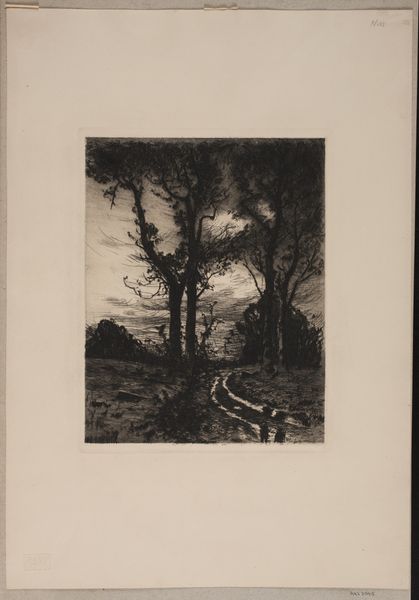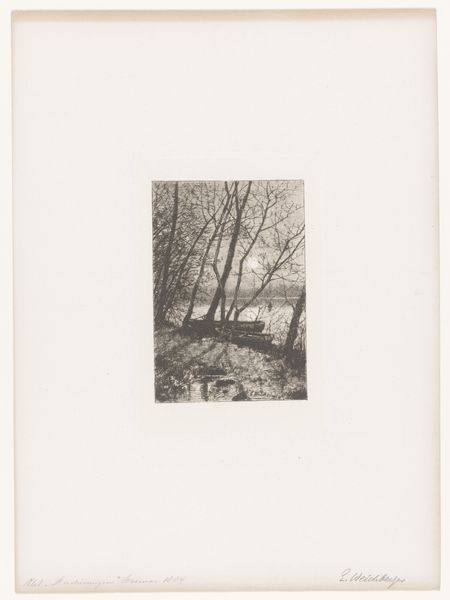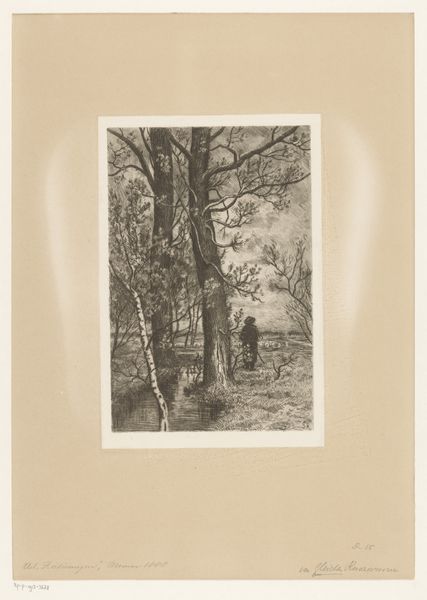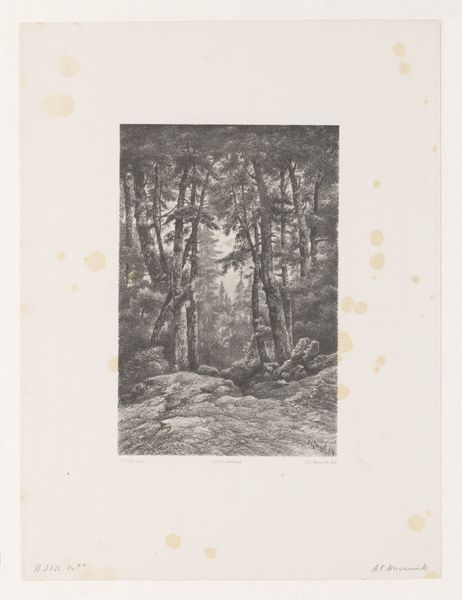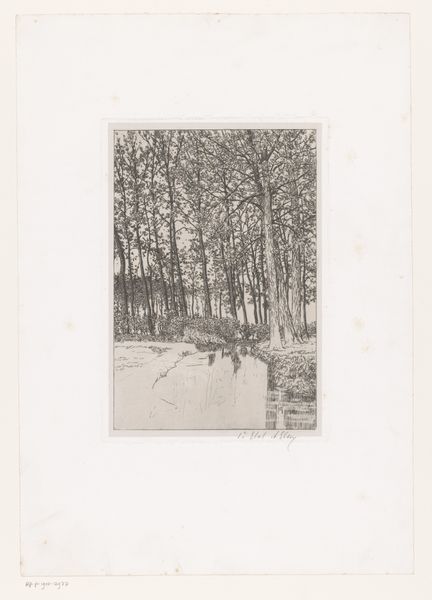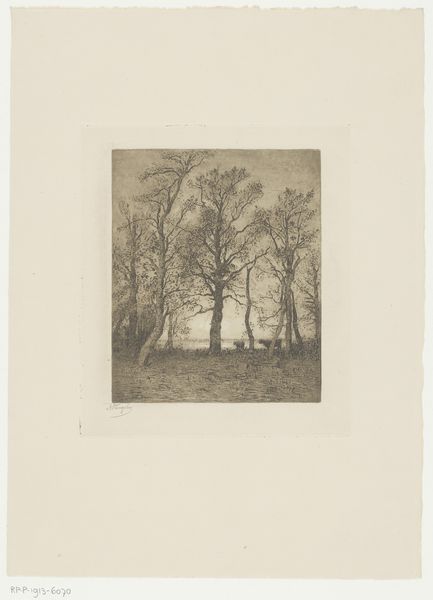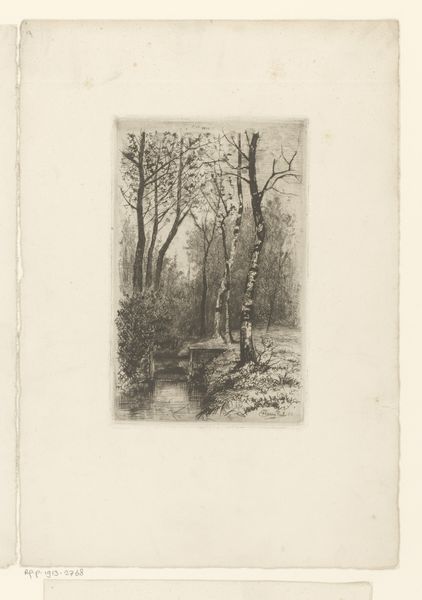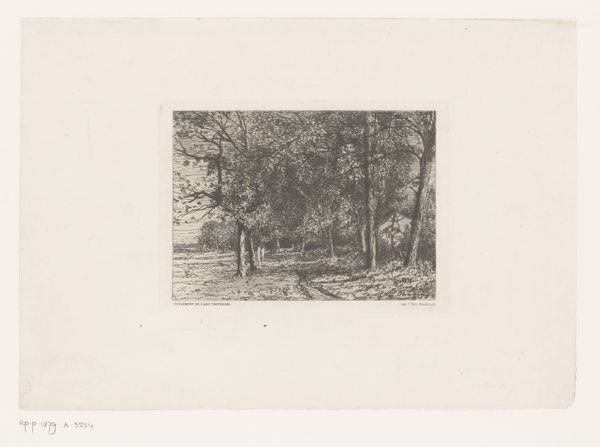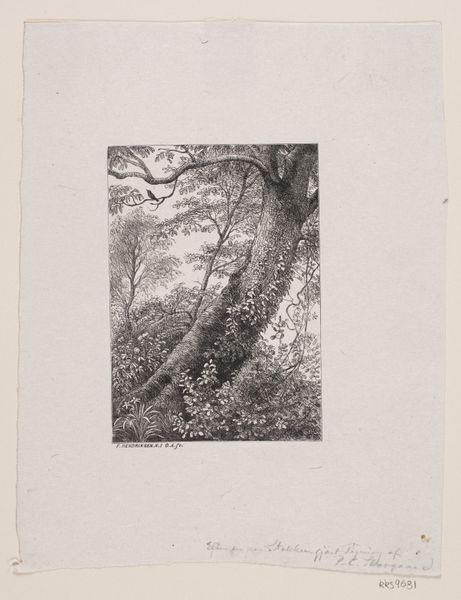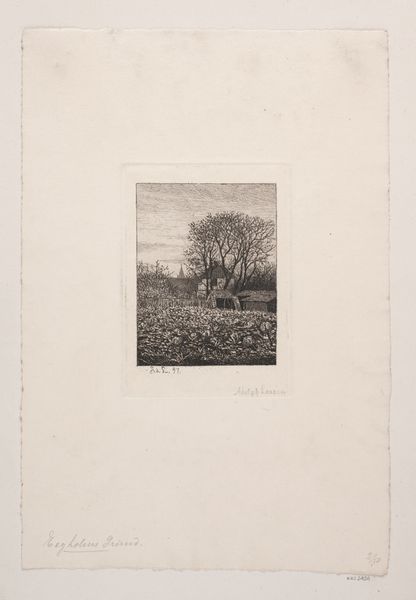
print, etching
#
pencil drawn
#
shape in negative space
#
light pencil work
# print
#
etching
#
pencil sketch
#
incomplete sketchy
#
pencil drawing
#
ink drawing experimentation
#
pen-ink sketch
#
tonal art
#
remaining negative space
Dimensions: 246 mm (height) x 165 mm (width) (Plademål)
Curator: We’re looking at "Egnen ved Fredensborg," an etching made by Axel Holm in 1895. What's your initial take? Editor: It has a wistful, almost melancholic feel. The blurry palace in the distance and the scratchy rendering makes me think about something lost to time, faded memories. Curator: As an etching, its creation involved layering acid to incise the image onto a metal plate. It allows us to consider artmaking through a craft lens and also how prints made art more widely accessible. What symbolic meaning can you derive from Holm's subject matter and style choices? Editor: Trees often stand as symbols of resilience and grounding. They're beings rooted in the earth but reaching for the sky, reflecting human aspirations. That blurry building could stand for political systems or the passing of generations, viewed through an intermediary, a natural filter almost. Curator: Do you consider the negative space and lack of sharp details to reflect social alienation amidst early modern industrialization? As a print, it was inherently reproducible, allowing for dissemination of its message to a wider population, unlike a singular painting. Editor: Perhaps, but the romantic treatment of nature pushes me more towards ideas about individual reflection and an escape from urbanization than outright social criticism. These isolated rural views tap into timeless needs for reflection on where one exists in society and in Nature. Curator: The choice of a repeatable medium hints that many in society pondered that question simultaneously. I would suggest the rough lines of the trees evoke human effort while still being bound by an imperfect craft. Editor: And the choice of a somewhat obscured landscape in soft black-and-white could signal the artist asking us to ponder the very nature of looking, the emotional significance of these landmarks, and to consider our roles as temporary keepers of cultural artifacts like this very place, this castle in the distance that only survives as image or memory, both faded and lasting. Curator: Absolutely. Thank you, those images will indeed persist because of the choices the artist made. It helps us understand this work a bit better! Editor: My pleasure, an enlightening dialogue!
Comments
No comments
Be the first to comment and join the conversation on the ultimate creative platform.
